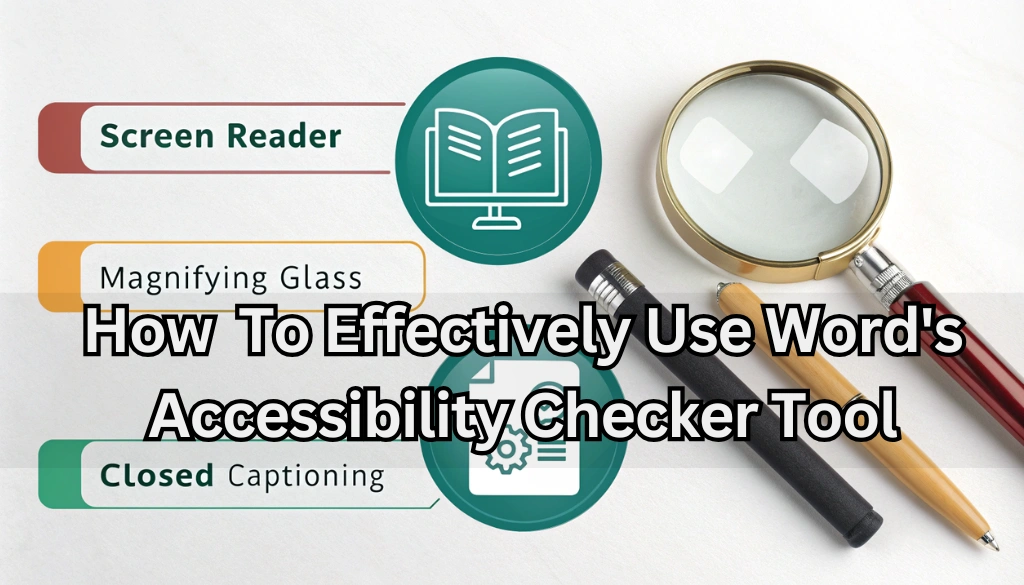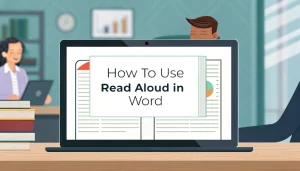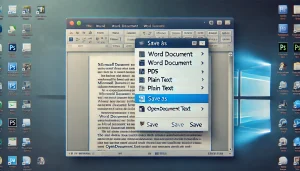Last Updated: January 23, 2025
Microsoft Word offers a powerful tool called the Accessibility Checker, designed to improve document readability for all users. It identifies issues like unclear headings and missing image descriptions, ensuring our documents meet accessibility guidelines. This makes content more accessible for individuals with diverse needs, including those using screen readers.
Accessing the Accessibility Checker is simple. Just go to the Review tab and click on it. The tool will quickly highlight any issues that need attention, allowing us to create documents that are both clear and engaging for every reader.
Table Of Contents
Accessing the Accessibility Checker in Microsoft Word
To access the Accessibility Checker in Microsoft Word, follow these simple steps. This built-in tool assesses your document’s accessibility, ensuring it is usable for everyone, including those with disabilities.
- Open your document: Start by launching the Word document you want to check.
- Select the Review tab: Find the Review option in the toolbar at the top of the screen.
- Click Check Accessibility: In the Review ribbon, click the Check Accessibility button to display the Accessibility Checker panel on the right.
- Review the results: The panel will highlight any errors and warnings in your document. Click on each item for suggestions on how to fix the issues.
Using the Accessibility Checker improves readability and ensures adherence to accessibility standards. This is critical for users relying on assistive technology, such as screen readers.
“Making documents accessible is not just a requirement; it’s a way to include everyone in the conversation.”
Understanding Accessibility Issues Identified by the Tool
The Accessibility Checker in Microsoft Word is critical for creating inclusive documents. It identifies key issues like missing alternative text for images, unclear headings, and complex tables—elements necessary for users who rely on assistive technology, such as screen readers. By using this tool, you improve the user experience for individuals with visual impairments, hearing impairments, and cognitive disabilities.
To use the Accessibility Checker, go to the Review tab and click on Check Accessibility. A pane will display identified issues categorized as errors, warnings, or tips, offering clear guidance for resolution. For example, if a table lacks proper headers, the tool highlights this and suggests corrections. You can also improve your document’s color contrast for improved readability.
While the Accessibility Checker is a valuable resource, it may not catch every issue. Always conduct a visual review of your work to make sure it meets accessibility standards. Committing to inclusive design not only helps you comply with accessibility guidelines but also enriches the content for all users. For more insights on document design, check out necessary terms that can improve your editing process.
Implementing Recommendations for Improved Document Accessibility
Improving document accessibility in Microsoft Word is easy with the built-in Accessibility Checker. Open your document and go to the Review tab. Click on Check Accessibility to display a panel that highlights potential issues affecting usability for individuals with disabilities.
Next, tackle the identified issues. The Accessibility Checker sorts findings into Errors and Warnings. Errors indicate critical problems, while Warnings suggest areas for enhancement. For example:
- Add Alternative Text: Include descriptive alt text for all images to support screen readers.
- Use Headings: Organize content with headings to improve navigation.
- Check Color Contrast: Make sure strong contrast between text and background for better readability.
By following these recommendations, you not only meet accessibility standards but also improve the in general user experience. This dedication creates an inclusive environment where everyone can access and engage with your content effectively.
Summing up
Word’s Accessibility Checker enables the creation of documents that everyone can read and enjoy. By analyzing our work, it identifies issues that may obstruct comprehension for some readers. This tool highlights problems and provides actionable tips to improve our documents. Ensuring accessibility broadens our audience, including individuals with disabilities. Use this tool to make your content clear, engaging, and welcoming for all readers.
Frequently Asked Questions
How do you use the accessibility checker in Word?
To use the Accessibility Checker in Word, go to the “Review” tab and click “Check Accessibility” to view and resolve issues.
How can I improve document accessibility using Word’s Accessibility Checker Tool?
en: Use Word’s Accessibility Checker to identify issues, add alt text, structure headings, and format text for clarity.
What are the built-in accessibility tools and features of Microsoft Word?
Microsoft Word offers an Accessibility Checker, Alt Text for images, Headings for structure, and text formatting options for legibility.
What are the key features of Word’s Accessibility Checker Tool?
en: Word’s Accessibility Checker identifies errors, provides warnings, suggests fixes, and ensures documents are accessible for all users.





